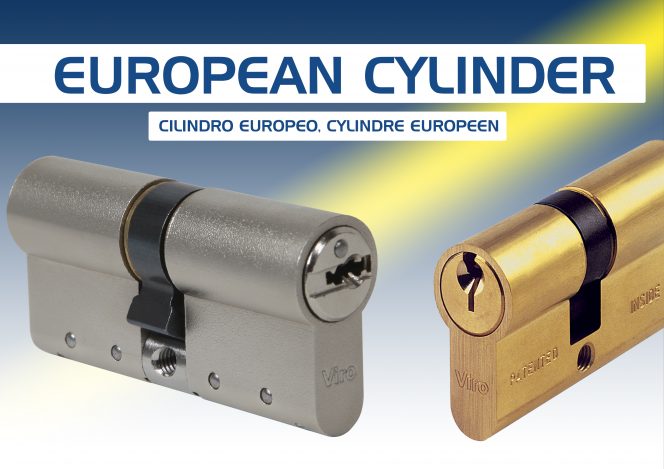In order to prevent undesired accesses, the European profile cylinder, combined with the lock, is currently the most complete and state of the art system. However, due to precisely this reason, there is a very wide range of demands on this particular cylinder.
This issue has been talked about several times and from various points of view in the Viro Security Club. However, navigating inside a blog can sometimes be frustrating, especially if, in order to solve a problem, one is obliged to scroll from one entry to another, obtaining much useful information (of which you were possibly already aware or not interested in at that precise moment) without sometimes being able to obtain the answer you were looking for, possibly because one gets tired of looking.
This is why a handbook which is easy and fast to consult, which directs you straight to the part of interest, like the one we propose today, can be a very useful tool.
Today’s subject, as may be understood from the title, is the EUROPEAN CYLINDER.
An index is given below which is useful for navigating inside the Viro Security Blog to best find all the information necessary on the European cylinder.
1. Can you distinguish a double bit lock from a European cylinder? / Double bit or European cylinder? Let’s solve some doubts!
Two useful articles for covering any doubts regarding the differences between European cylinder and double bit.
2. The characteristics of a good quality European cylinder: bite-sized security.
This article gives general information on the materials used for the construction of European cylinders and on the general characteristics of these particular cylinders which contribute to obstructing various types of opening, such as the opening with brute force, by means of burglary tools for removing or breaking the cylinder, or lock picking, by using advanced techniques. You will also find information on the Viro Palladium high security European cylinder and the control on the illegal copying of the keys.
3. How is a European cylinder made
Here you will find an identikit of the European cylinder in terms of structure, internal composition, as well as an interesting explanation of the types of cam planned for this cylinder: standardcam and DIN anti-withdrawal cam.
4. 7 good reasons to protect your home with a European profile cylinder
The title speaks for itself. If you are looking for valid reasons for purchasing a European cylinder you only need to read this article.
5. How do you recognise a high security European profile cylinder? – Part I
This blog enters into great detail on the internal characteristics of the cylinder which is able to withstand opening with brute force. The focus is on anti-drill reinforcements and pull-resistant reinforcements.
- 5.1 How do you recognise a high security European profile cylinder? – Part II
This looks even further into the issue of opening with brute force. The focus this time is on the importance of the inclination of the cam and on the materials. - 5.2 How do you recognise a high security European profile cylinder? – Part III
This third part covers in detail the methods used in lock picking, with particular attention to opening with tensor and pick (picking). The characteristics of the European cylinder which enable them to be withstood are also covered: number, height and arrangement of the pins and counter-pins. - 5.3 How do you recognise a high security European profile cylinder? – Part IV
This article covers the problems resulting from key bumping on the European cylinder and the anti bumping systems are listed. - 5.4 How do you recognise a high security European profile cylinder? – Part V
This blog explains how to avoid the much feared illegal copying of keys in the specific case of European cylinders.
6. How to install and replace a European profile cylinder in 5 easy steps
An instruction manual to be followed step by step when it is necessary to install or remove a European cylinder.
Has this resolved your doubts? We certainly hope so, but if not write to us in the comments section!
